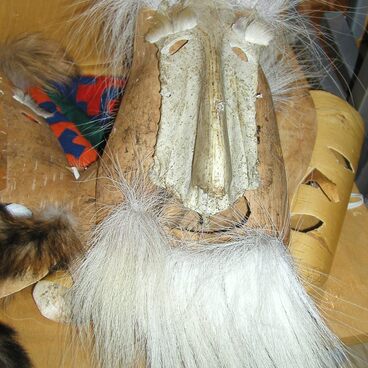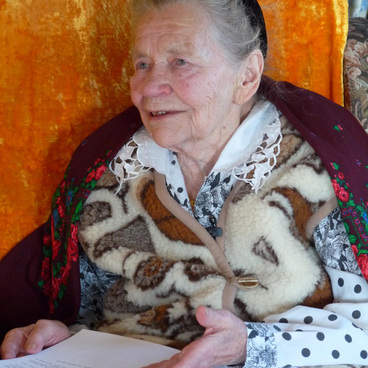A tubeteika (a skull-cap) is one of the oldest and traditional headdresses of the Tatars and Bashkirs. The word tubeteika is related to the Turkic “tube” meaning “top”, “pommel”. Researchers connect its origin to military balaclavas: a soft cap was worn to avoid direct contact with a metal helmet.
The Bardym tubeteika is one of the brightest manifestations of folk art of the Bashkirs and Tatars of the Tulva River district. The craft emerged in the middle of the 20th century on the basis of traditional embroidery techniques and ethnic artistic traditions — they are manifested in the ornamental composition and polychrome color palette. During this period, the Bardym tubeteika acquired bright stylistic and compositional features that distinguish it from the headdresses of other groups of Tatars and Bashkirs. In the second half of the 20th century, a locally made tubeteika was the only traditional item of the men’s costume of the Tulva River district.
The headdress was usually made of mostly black, pile fabrics — fustian, velvet, and plush. Over time, the tubeteika acquired a special shape, characteristic only for the Perm Tatars and Bashkirs: a low cylindrical cap-band and a hemispherical pyramidal top with four wedges.
All women of the Tulva River district learned the skills needed to make tubeteikas: the housewives sewed them for their family members and as gifts for relatives and acquaintances. In each village there were craftswomen who made these headdresses to order.
The “Bardym tubeteika” has become a symbol not only of the Bardym district, but also of the entire region. Collections of Bardym tubeteikas are presented in the Perm State Art Gallery, the Perm Museum of Local Lore, the Bardym Museum of Local Lore. In 2007, the “Tubeteika Museum” was opened in the village of Berezniki, Bardym district, which displays the best works of local craftswomen created over the past 50 years.
The Bardym tubeteika is one of the brightest manifestations of folk art of the Bashkirs and Tatars of the Tulva River district. The craft emerged in the middle of the 20th century on the basis of traditional embroidery techniques and ethnic artistic traditions — they are manifested in the ornamental composition and polychrome color palette. During this period, the Bardym tubeteika acquired bright stylistic and compositional features that distinguish it from the headdresses of other groups of Tatars and Bashkirs. In the second half of the 20th century, a locally made tubeteika was the only traditional item of the men’s costume of the Tulva River district.
The headdress was usually made of mostly black, pile fabrics — fustian, velvet, and plush. Over time, the tubeteika acquired a special shape, characteristic only for the Perm Tatars and Bashkirs: a low cylindrical cap-band and a hemispherical pyramidal top with four wedges.
All women of the Tulva River district learned the skills needed to make tubeteikas: the housewives sewed them for their family members and as gifts for relatives and acquaintances. In each village there were craftswomen who made these headdresses to order.
The “Bardym tubeteika” has become a symbol not only of the Bardym district, but also of the entire region. Collections of Bardym tubeteikas are presented in the Perm State Art Gallery, the Perm Museum of Local Lore, the Bardym Museum of Local Lore. In 2007, the “Tubeteika Museum” was opened in the village of Berezniki, Bardym district, which displays the best works of local craftswomen created over the past 50 years.

